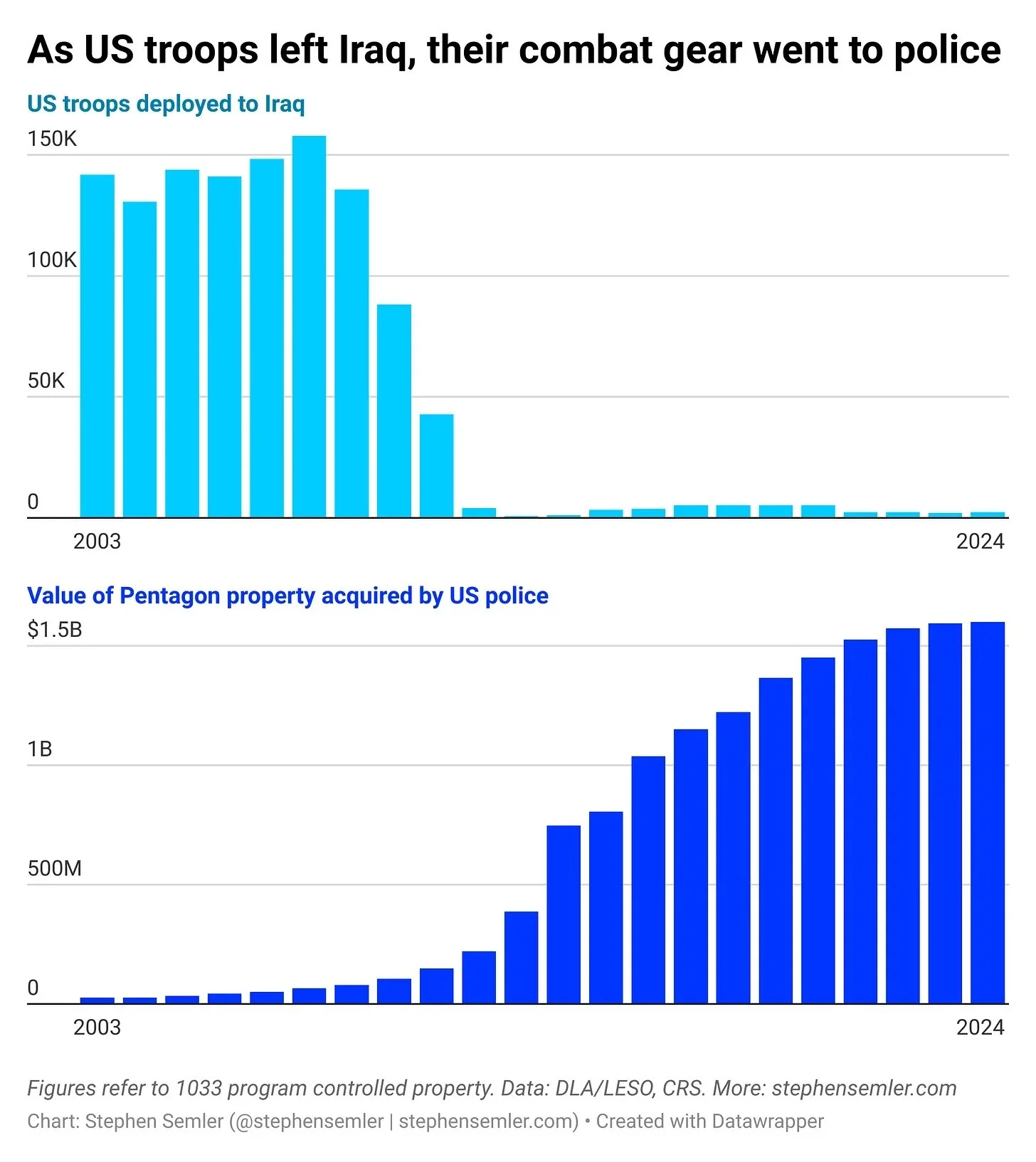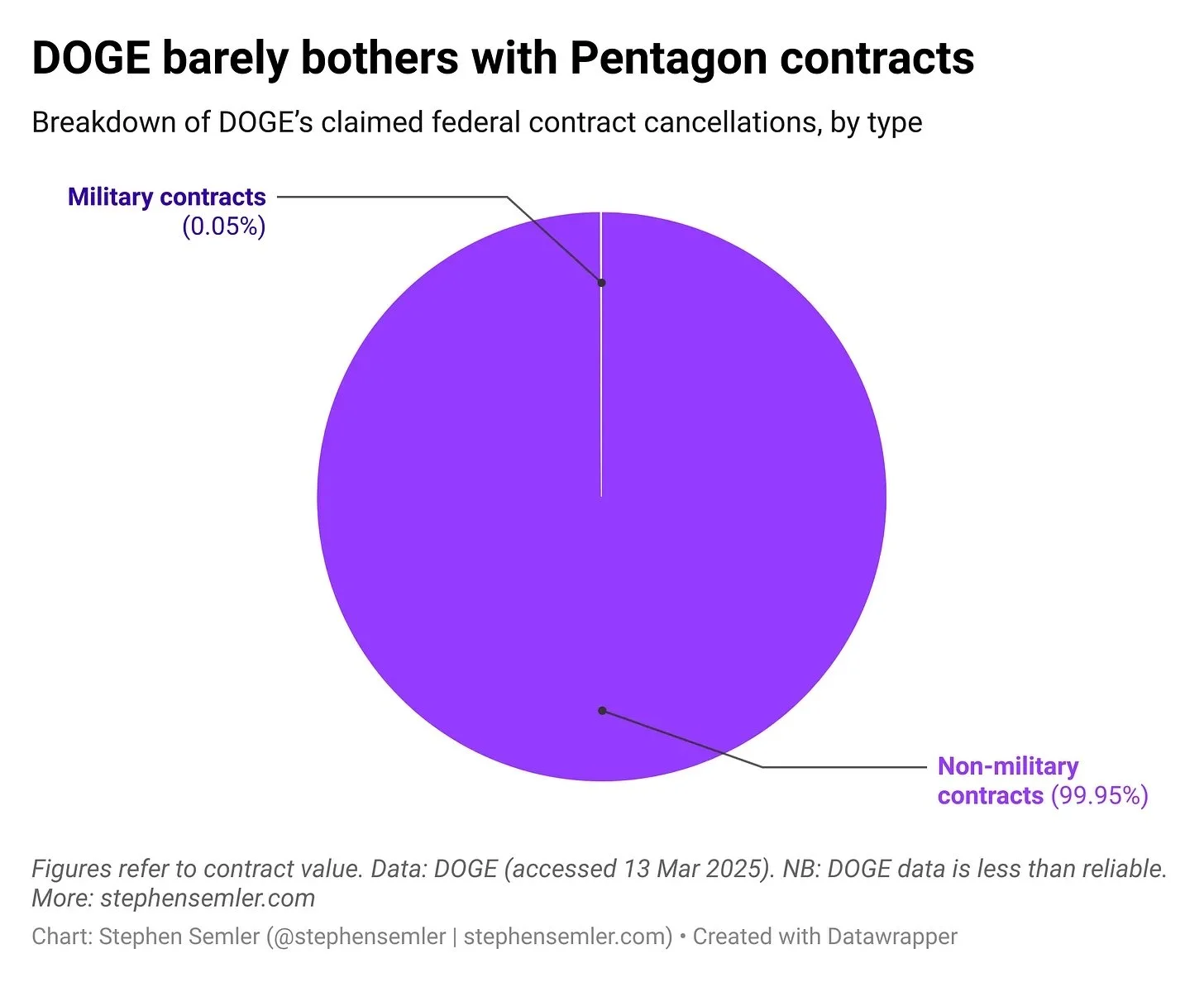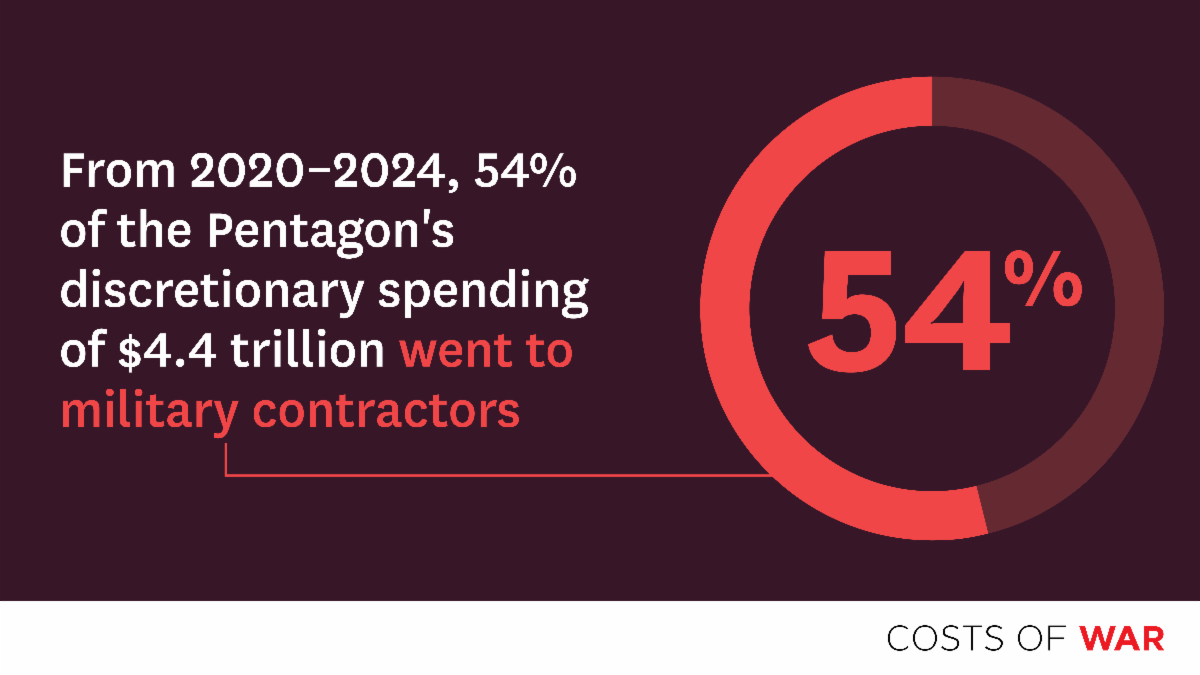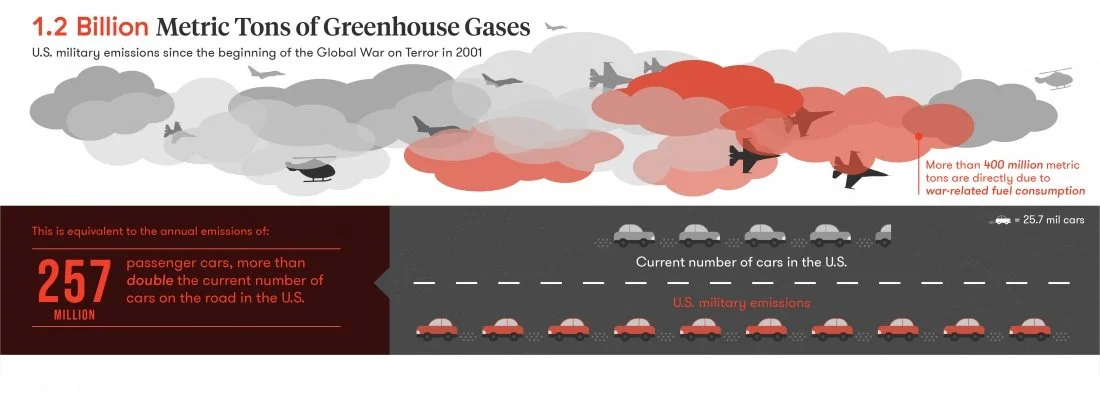Key Facts
Find key data about the U.S. Military Industrial Complex below.
This page is in development. Each key fact is cited carefully. And we are in the process of verifying that the data reflects the consensus of experts across the Network to Dismantle the Military Industrial Complex.
official ANNUAl Military spending
(Fiscal year 2024)
$817,300,000,000
($817.3 Billion)
The military budget refers to the budget for the US Department of [so-called] Defense (formerly and more accurately called the “Department of War”). Available at https://comptroller.defense.gov/Portals/45/Documents/defbudget/FY2025/FY2025_Budget_Request_Overview_Book.pdf. The $997 billion total cited by SIPRI includes some costs omitted from the above figure. The SIPRI figure is a helpful estimate when comparing US military spending to other countries (as in the graph below), but it does not represent the true total of $1.7 trillion.
actual total annual military spending
(Fiscal year 2024)
$1,700,000,000,000+
($1.7 trillion+)
The actual total includes spending on nuclear weapons (which the Pentagon controls) in the Department of Energy budget, spending to support other countries’ militaries in the State Department budget, and spending on past wars in the Veterans Administration budget and in interest payments on past debt (David Vine, June 2025, calculations based on USASpending.gov data at https://www.instagram.com/p/DJRgj_cpjws). BETTER CITATION COMING SOON.
official Military spending approved in Fiscal year 2025
including trump’s big billionaires’ bill
$1,055,000,000,000
($1.055 trillion)
Also known as the “Big Beautiful [sic] Bill,” the recently passed reconciliation bill adds $156.2 billion to the $899 billion already approved for the military. (Like most other approved Pentagon spending, the $156.2 billion can be spent over multiple years.) Stephen Semler, “Pentagon budget tops $1 trillion. Now what?” Polygraph newsletter, July 10, 2015, https://www.stephensemler.com/p/pentagon-budget-tops-1-trillion-now.
US military spending vs. Rest of the World
Rank of US Military of
world’s largest institutional
greenhouse gas emitters:
#1
Source: Ryan P. Thombs, Andrew K. Jorgenson, and Brett Clark, “Reducing U.S. military spending could lead to substantial decreases in energy consumption,” PLOS Climate 4, no. 7 (2025): e0000569. https://doi.org/10.1371/journal.pclm.0000569.
Total US spending on the
so-called war on terror
(2001-2021)
$8,000,000,000,000+
($8 trillion+)
Source: Costs of War Project, “Estimate of U.S. Post-9/11 War Spending,” June 2025, https://watson.brown.edu/costsofwar/costs/economic/budget.
the annual budget for ice (immigration and customs enforcement) is expected to be larger than all but 14 militaries globally including those of:
australia, canada + spain
Source: New spending approved in Trump’s Big Billionaires’ Bill will average around $37.5 billion per year making it larger than the 2024 budget’s of all but 14 militaries in the world according to SIPRI, "“Unprecedented rise in global military expenditure as European and Middle East spending surges,” April 28, 2025, https://www.sipri.org/media/press-release/2025/unprecedented-rise-global-military-expenditure-european-and-middle-east-spending-surges. See also Brendan Cole and John Feng, “ICE Budget Now Bigger Than Most of the World's Militaries,” Newsweek, July 2, 2025, https://www.newsweek.com/immigration-ice-bill-trump-2093456.
new spending approved for ICE & other immigration and border militarization for fiscal years 2025-2029 under trump’s big billionaires’ bill:
$170,000,000,000
($170 Billion)
Also known as the “Big Beautiful [sic] Bill.” Source: Camilo Montoya-Galvez, “Trump's "big, beautiful bill" gives ICE unprecedented funds to ramp up mass deportation campaign,” CBS News, July 10, 2025, https://www.cbsnews.com/news/ice-funding-big-beautiful-bill-trump-deportations/.
Top 5 US war profiteers (2020–2024): Lockheed Martin | Raytheon (RTX) | Boeing | General Dynamics | Northrup Grumman |
Top 5 US war profiteers (2020–2024): Lockheed Martin | Raytheon (RTX) | Boeing | General Dynamics | Northrup Grumman |
charts and data you can use
For more of Stephen Semler’s work, see stephensemler.com.
Note: Some of the spending figures below diverge from those above because they reflect different forms of spending on the US military. Spreading military spending across multiple government budgets helps to hide the true amount of spending on the US military and war.
For the full chart of Senators, visit https://www.stephensemler.com/p/votes-on-military-spending-vs-arms. For House members, see https://www.stephensemler.com/p/ranking-the-top-25-house-members.
Note: Northrup Grumman is #32 on this list ($8.84 million in lobbying). In addition to the longstanding weapons maker behemoths circled, Meta (Facebook), Amazon, and Alphabet (Google) have increasingly pursued and won multi-billion-dollar Pentagon contracts in recent years. Most of the other corporations on this list receive at least some Pentagon contract funds.
social media slides you can use
more key facts you can use
Number of weapons industry lobbyists as of 2024 vs. members of Congress: 950 vs. 535
Number of countries US forces have fought in since 2001: 28 [minimum]
3. Top 5 US war profiteers (2020–2024): Lockheed Martin, Raytheon (RTX), Boeing, General Dynamics, Northrup Grumman
4. Estimated number of US military bases abroad: 750–800
Sources
1. William D. Hartung and Stephen Semler, “Profits of War: Top Beneficiaries of Pentagon Spending, 2020 – 2024,” Quincy Brief #79, Quincy Institute, July 8, 2025, p. 5, https://quincyinst.org/research/profits-of-war-top-beneficiaries-of-pentagon-spending-2020-2024.
2. David Vine, update on The United States of War: A Global History of America’s Endless Conflicts, from Columbus to the Islamic State (University of California Press, 2020). The countries are: Afghanistan, Burkina Faso, Cameroon, Central African Republic, Chad, Colombia, Democratic Republic of the Congo, Haiti, Iran, Iraq, Kenya, Libya, Mali, Mauritania, Mozambique, Niger, Nigeria, Pakistan, Palestine, Philippines, Saudi Arabia, Somalia, South Sudan, Syria, Tunisia, Uganda, Ukraine, Yemen.
3. Across 2020–2024. Hartung and Semler, “Profits of War.”
4. Overseas Base Realignment and Closure Coalition, Fact Sheet, https://www.overseasbases.net/fact-sheet.html. Drawing on David Vine, Patterson Deppen, and Leah Bolger, “Drawdown: Improving U.S. and Global Security Through Military Base Closures Abroad,” Quincy Brief #16, Quincy Institute/World Beyond War, September 20, 2021, https://quincyinst.org/report/drawdown-improving-u-s-and-global-security-through-military-base-closures-abroad/.














